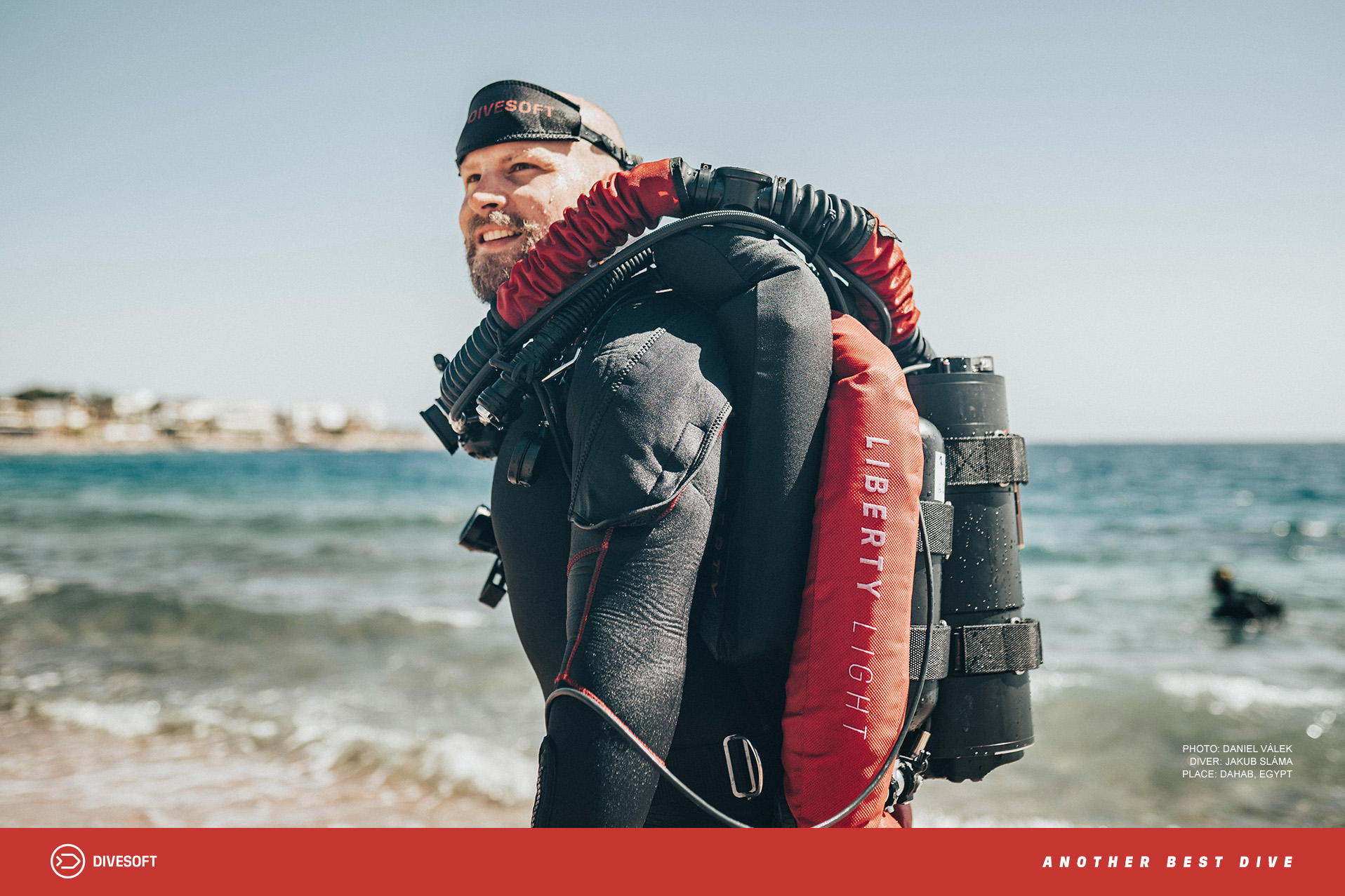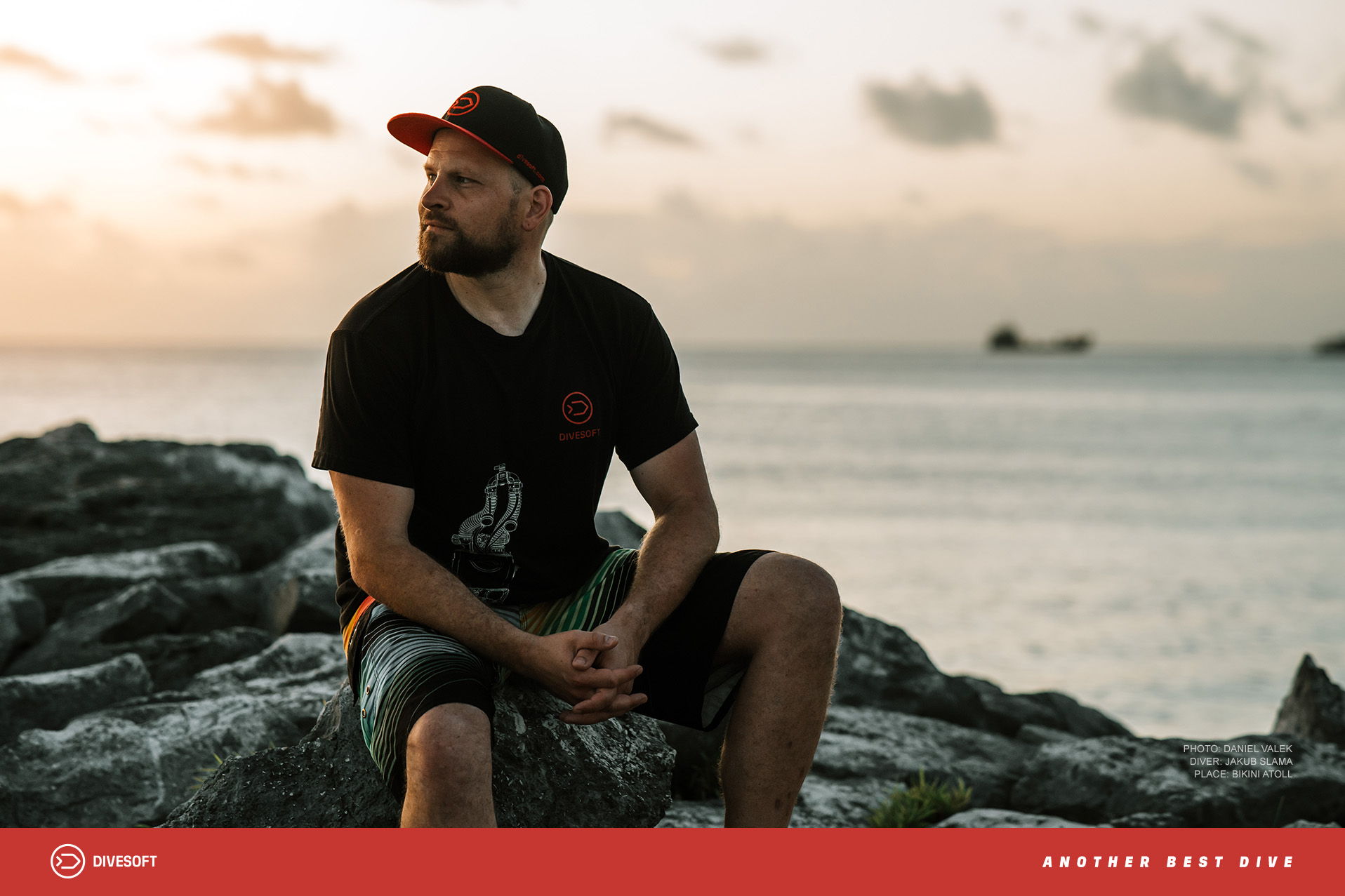CCR first dive: experience for life
07/22/2025

From Steam Engines to Bullet Trains
When you dive with a classic open-circuit system, it’s a bit like riding an old steam train—bubbles splash behind you like steam from a locomotive, you hear the gentle gurgle of your regulator, and everything runs on well-practiced habits. As you inhale, you’ll float up a bit; as you exhale, you’ll drift down. You’ve been balancing your buoyancy this way since your first Open Water course, and by now you’re really good at it—you can hover in place as if nailed to the seabed. But what if someone took away that locomotive and plunked you into a Shinkansen? That’s exactly the feeling I had on my very first dive with a CCR (Closed Circuit Rebreather).
Time to Take the Plunge… But How?
My first encounter with a CCR was anything but ordinary. At that time, I was already a technical diving instructor and had been studying CCRs with great enthusiasm for a long time. It happened shortly after I began working for DIVESOFT. The Liberty was still a functional prototype awaiting its first CE certification, and I was prepping it for testing.

An Anchor Hunt, CCR-Style
Our in-house programmer, nicknamed “Termit” (a tireless workhorse and coding elder statesman), owns a boat on the Orlík reservoir. He managed to lose his anchor somewhere in the middle of a cove and asked me for help retrieving it. Of course, we leapt at the chance! Aleš Procháska suggested we do the job on rebreathers—and I was thrilled… but diving my CCR for the first time while hunting for a lost anchor?
Assembling the Prototype: First Impressions
I set up the unit almost entirely on my own—I knew it inside out. This prototype differed from today’s production Liberty units in several key ways: it featured a front-mounted counterlung (FMCL) instead of the now-common back-mounted style; its electronics ran on two sets of six AA batteries that had to be swapped after every dive; the Automatic Diluent Valve (ADV) sat at the bottom of the counterlung and was completely different in design; and both inhale and exhale counterlungs had large overpressure relief valves. Many solutions were awaiting final tweaks, so prepping the prototype wasn’t without its challenges.

Suiting Up and Diving In
Aleš coached me through a final checklist, and then I donned the rig. My first impression wasn’t great—two bulky counterlungs on my chest and a thick corrugated hose whipping around made me feel clumsy, and the sun beat down mercilessly. But the moment we slipped beneath the surface, all awkwardness vanished. My senses snapped to attention: my eyes darted side to side, my ears strained for silence, and my fingers hovered over the inflator, ready to perform the subtle lung-compensating work I’d spent years perfecting.
Expectations vs. Reality Underwater
I anticipated the hot blast of air from the scrubber, but at first I couldn’t distinguish it. I expected total silence, yet when I focused closely, the sounds reminded me of breathing through a snorkel. The whirr of the solenoid was barely audible—and in shallow water, it threw me off balance when it injected oxygen just after I’d achieved perfect trim.

The Dive: Crystal Clarity and Quick Recovery
It’s been ages, but I still remember that sunlit, golden water—unusually clear for this spot. We found the anchor quickly, around 22 meters down. I was amazed by the razor-sharp displays on our handheld units, glowing like twin jewels in the dusky depths, clearly showing every vital reading.
The Ascent Surprise: Mastering Buoyancy Again
Surfacing was my biggest shock. I’d anticipated the different buoyancy, the silence, and all the other CCR quirks—but I wasn’t prepared for the pressure in my lungs during ascent. On open-circuit, you simply breathe out and let the excess gas escape. Here, I learned fast that I had to actively purge gas outside the loop or crack the overpressure valves.
I emerged utterly exhilarated. I wished Aleš didn’t have to rush home—I could have floated there until the scrubber ran dry. In the years that followed, however, I more than made up for it.
From Student to Mentor: A CCR Journey
Since then, I’ve logged hundreds—if not thousands—of hours on the Liberty, and I’ve guided countless divers, instructors, and instructor-trainers into the CCR world. I’ve tried other units along the way, but it’s hard to beat starting out on the very best.
Author: Jakub Šimánek
I’ll Never Dive a Rebreather”… But Why Not Give It a Try?
I remember my first day diving with a rebreather. It was during a demo event held occasionally by one of the local dive centers. At the time, I wasn’t sure if rebreather diving was the right path for me—I thought OC trimix was probably the highest level I’d ever go. Still, I was curious to experience it firsthand. Since the dive center was offering try-dives with rebreathers, I figured—why not? Why not try something different? At the event, there were two different units available. I had the chance to try both in a pool after a quick introduction to how they functioned. Before that day, I had always thought of rebreathers as extremely complicated, overly sophisticated, and difficult to understand. But once I saw the units in person, I realized they weren’t nearly as intimidating as I had imagined.

Very Different Than Expected
That first pool session was eye-opening. The pool was around 3 meters deep, and I started off kneeling on the bottom before experimenting with my buoyancy. I just looked up and relaxed. The first thing I noticed was the silence. It struck me immediately. That silence was the very first sensation I remember from diving on a rebreather. Suddenly, my perception of the underwater world shifted I hadn’t realized just how loud open circuit actually was. From that moment on, I always noticed the noise of OC diving. That also explained why my underwater photos often had fish tails in them—once the fish heard me, they’d swim away. Now that I dive mostly with a rebreather, especially as an underwater photographer, the fish come to me. When you’re on a rebreather, you can hear OC divers approaching from far away. That contrast—between silence and noise—was one of the key sensations I remember from that first try-dive. The next thing I noticed was buoyancy control. At the time, I already had several hundred OC dives under my belt, and I’d often heard that the better you are on OC, the harder it is to adapt to a rebreather. But during that first dive, buoyancy felt surprisingly natural. I didn’t fully understand what the handset was showing me—PPO2 readings of sensors were not as familiar as they are now—but that didn’t matter at the time. What mattered was how I experienced the underwater world.

An Experience That Changes Everything
We go diving to absorb the underwater world, and I immediately recognized how much better a rebreather allowed me to do just that. It was the beginning of what I now think of as truly “ZEN” underwater moments. Diving became an escape—no phones, no stress, a quiet exploration in weightlessness. It opened up a whole new dimension.

The Initial Experience Down the Line
Later on, I came to appreciate the practical benefits of rebreathers too: dramatically extended dive times, warmer breathing gas that kept me comfortable on longer dives, the silence, and simpler gas logistics with no underwater gas switching. These were just bonuses on top of the transformative experience. Eventually, I found myself enjoying the entire process of rebreather diving—from prepping the unit to being part of the rebreather community, exchanging experiences, and reaching sites most divers never get to see. The rebreather extended my range and gave me access to truly rare underwater locations. I would absolutely recommend that anyone try a rebreather at least once, even if you don’t plan to get one. The experience itself—how different it feels—is well worth it. Try it and see where it takes you.
Author: Jakub Sláma
Divesoft.app
Plan your decompression, gasses, utilize checklists, check your logs + more!!
All for Free.
